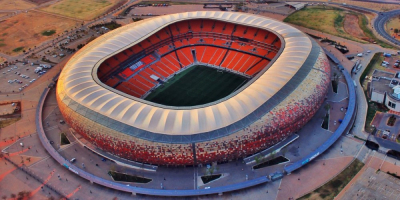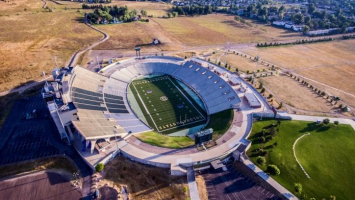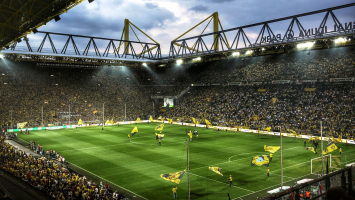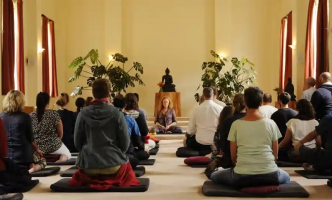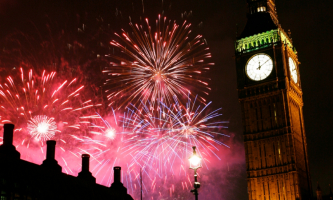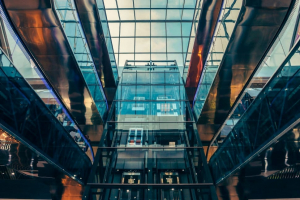Top 10 Biggest Stadiums In The UK
What are the largest stadiums in the United Kingdom in terms of capacity? Obviously, some may be fairly large in terms of the amount of room they take up, but ... read more...they may be relatively modest in terms of the number of people they can accommodate. Toplist will help you learn more about the biggest stadiums in the UK! Let’s begin!
-
Wembley Stadium will begin our list of the top biggest stadiums in the UK today. Wembley Stadium, in London, England, has a capacity of 90,000 seats. The new stadium was built to replace the former stadium of the same name, which was demolished in 2003. In 2007, the new stadium was inaugurated. Wembley's roof, known as the Wembley Archway, is one of the city's most distinctive features.
Wembley Stadium has the longest unsupported roof in the world. In addition, one special thing about Wembley Stadium is that it is home to England's national football team on a regular basis. Wembley Stadium also hosted the UEFA Champions League finals in 2011 and 2013, as well as the 2012 Summer Olympics gold medal football match. Fans of soccer in Europe all want to visit this famous stadium once to enjoy the wonderful soccer time here.Capacity: 90,000
Country: England
City: London
Built: 1923/2007
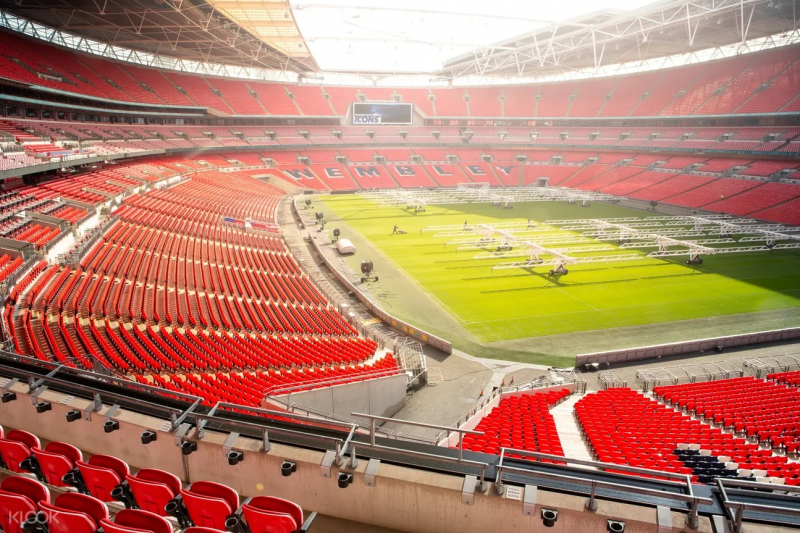
Wembley Stadium. Photo: klook.com 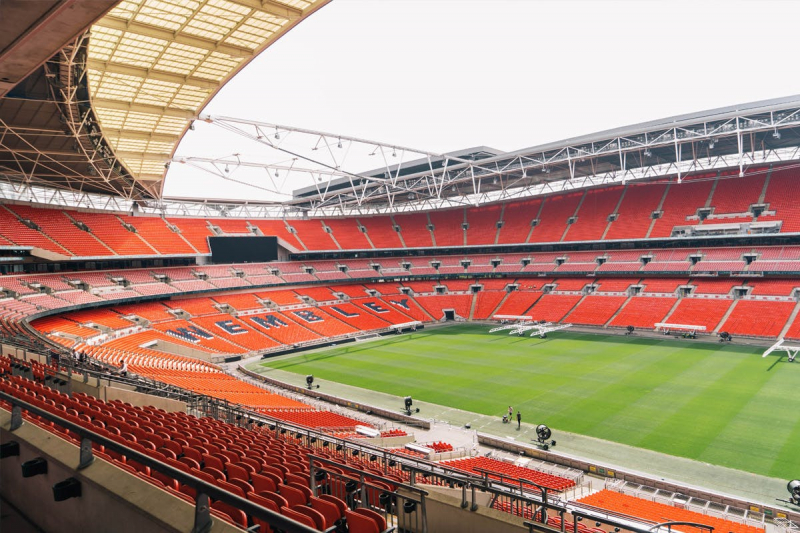
Wembley Stadium. Photo: mailexperiences.co.uk -
Twickenham Stadium will be the second name on the list of the top biggest stadiums today. Twickenham Stadium is located in southwest London and is regarded as the second-largest sports stadium in the UK. Twickenham Stadium first opened its doors in 1907. The stadium was renovated between 1990 and 2008 in order to increase seating capacity. Twickenham Stadium can seat up to 82,000 people.
Twickenham Stadium, unlike the other stadiums on this list, was built for rugby rather than football. The Rugby Football Union owns Twickenham Stadium, and it is where England's national rugby team plays their matches. The World Rugby Museum is also located at this stadium. In addition, many big concerts, such as ones performed by Rihanna, Iron Maiden, Bryan Adams, Bon Jovi, Genesis, U2, Beyoncé, The Rolling Stones, and others, were hosted at Twickenham Stadium.Capacity: 82,000
Country: England
City: London
Built: 1909
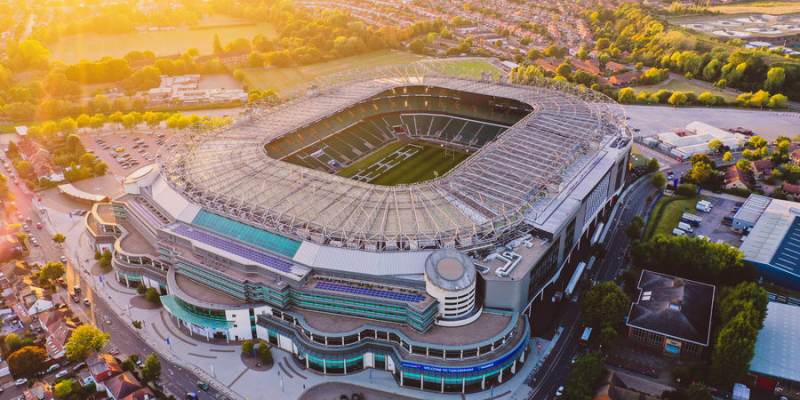
Twickenham Stadium. Photo: twickenhamstadium.com 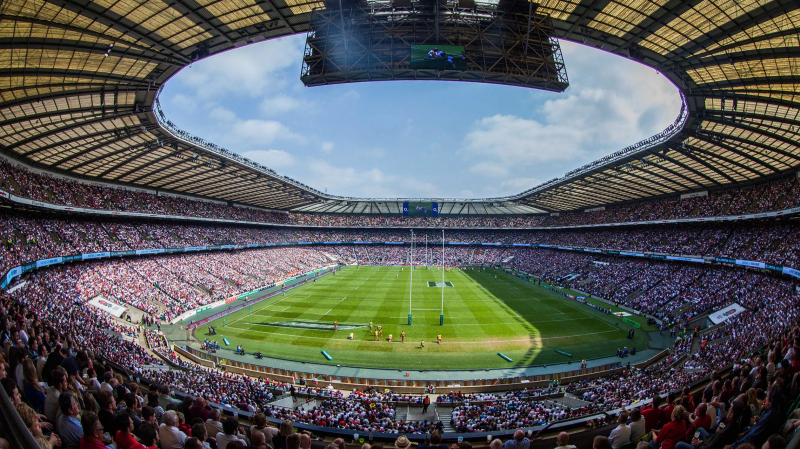
Twickenham Stadium. Photo: luxurylondon.co.uk -
Manchester United has called Old Trafford home since it was opened in 1910. There are several "nods" to the club's storied past throughout the stadium, including statues of both Matt Busby and Alex Ferguson, as well as a stand named after the latter. The Old Trafford stadium has undergone several renovations, the most recent in the 1990s following the publishing of the Taylor Report into the Hillsborough Disaster.
As a result of the FA's decision to compel all top-flight stadiums to be all-seater, the stadium's capacity was temporarily reduced to 44,000 during the building period. Of course, it has recovered and now has the greatest capacity of any club-side stadium in the United Kingdom. In addition to United games, the stadium has previously hosted FA Cup semi-finals, rugby league and rugby union matches, and music concerts by a variety of musicians.Capacity: 75,731
Country: England
City: Manchester
Built: 1909 - 1910
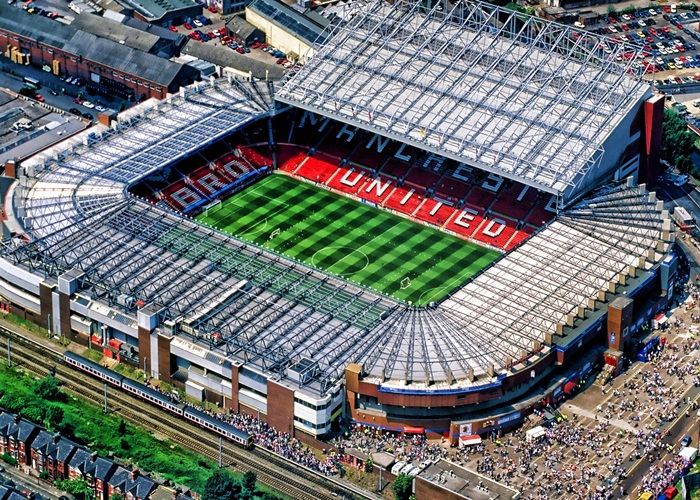
Old Trafford. Photo: dulichvietnam.com.vn 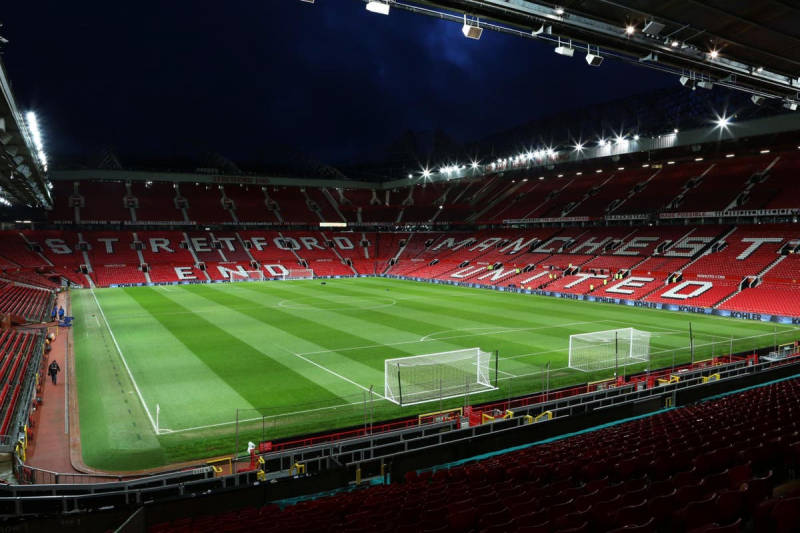
Old Trafford. Photo: standard.co.uk -
The Principality Stadium, sometimes known as the Millennium Stadium due to its sponsorship, is the temporary home of the Wales national football team and the permanent home of the Wales national rugby team. When Wembley was being reconstructed from 2001 to 2007, Principality Stadium was the stadium of the FA Cup and League Cup finals for many football fans in England.
The Principality Stadium is primarily used for rugby matches, and the most well-known events are staged there for that sport. For example, the 1999 Rugby World Cup final, or the Heineken Cup or Rugby League Challenge Cup finals, which have all been staged there on a regular basis. In addition, since its inception in 1999, Principality Stadium has also hosted a variety of music concerts. On the eve of the new millennium, the Welsh band Manic Street Preachers performed there, while Bon Jovi, Madonna, and The Rolling Stones have also performed there.
Capacity: 74,500
Country: Wales
City: Cardiff
Built: 1997 – 1999
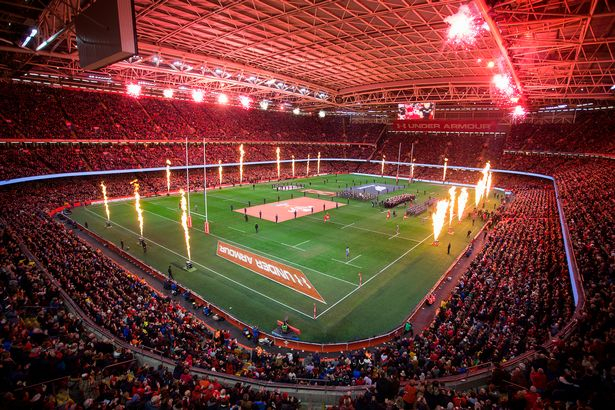
Principality Stadium. Photo: walesonline.co.uk 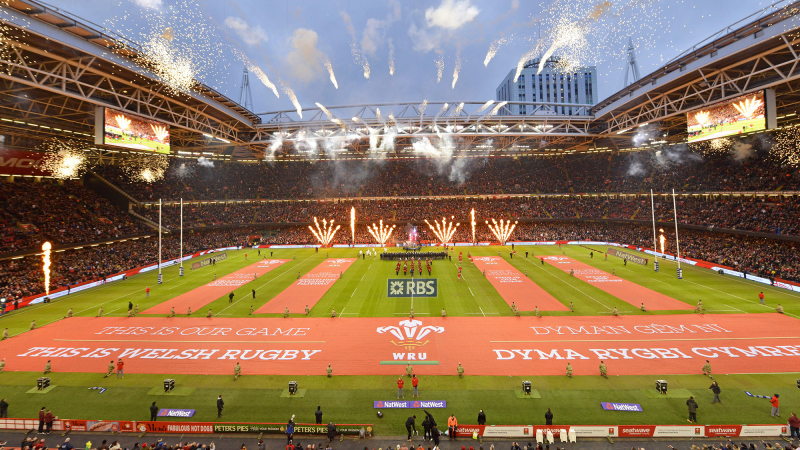
Principality Stadium. Photo: wru.wales -
Murrayfield Stadium is the next name on the list of the biggest stadiums in the UK. Murrayfield Stadium (sometimes known as BT Murrayfield Stadium for sponsorship reasons, or simply Murrayfield) is a rugby stadium in Edinburgh, Scotland. Murrayfield Stadium is located in the Murrayfield neighborhood. In fact, Murrayfield Stadium is the largest stadium in Scotland and the fifth largest in the United Kingdom, with a seating capacity of 67,144.
The stadium is the home of the Scottish Rugby Union (SRU) and serves primarily as a rugby union venue. Most of Scotland's home test matches, as well as the Scottish Hydro Electric Cup final, Pro14 and European Rugby Champions Cup matches, are held at the stadium. Murrayfield Stadium has formerly hosted American football, rugby league, and association football matches, as well as several music events,...
Capacity: 67,144Country: Scotland
City: Edinburgh
Opened: 1925
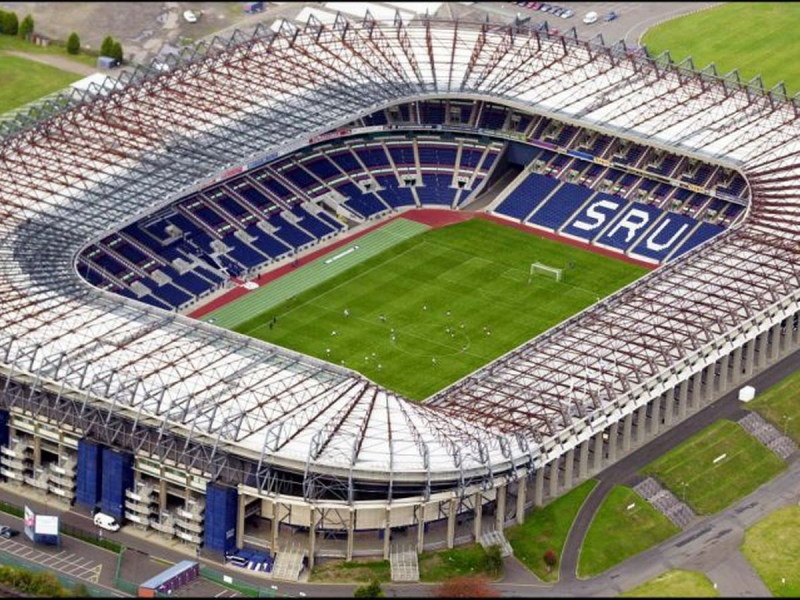
Murrayfield Stadium. Photo: dailyrecord.co.uk 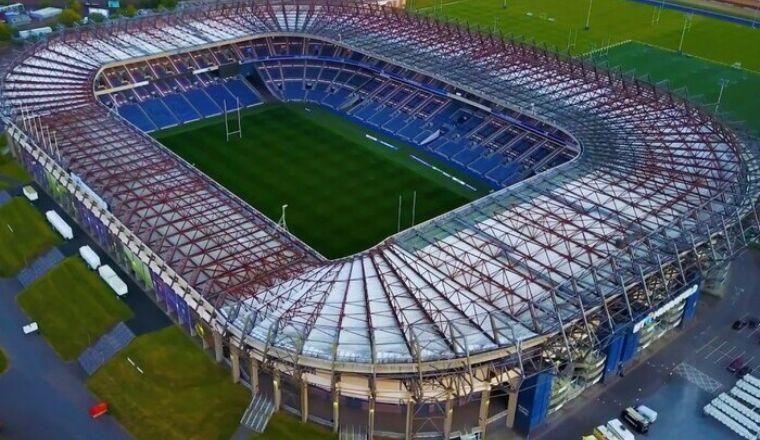
Murrayfield Stadium. Photo: rugbystadiums.co.uk -
The history of the London Stadium is brief yet fascinating. London Stadium was built expressly for the summer Olympics when London was the host city in 2012, and it is now owned by West Ham United and serves as the successor to their old stadium. Known for most of its existence as Upton Park but suddenly becoming The Boleyn Ground just as the Hammers were preparing to leave it, the move to the Olympic Stadium has unquestionably helped West Ham improve their game as far as their home ground is concerned.
London Stadium was the "jewel in the crown" of the Olympics, not least because it hosted "The Greatest Show On Earth's" opening ceremony. The event, directed by Danny Boyle, was a remarkable examination of all that is wonderful about the United Kingdom. In addition to football, the stadium has hosted cricket, American football, baseball, and motor racing.
Capacity: 66,000Country: England
City: London
Built: 2008 - 2011
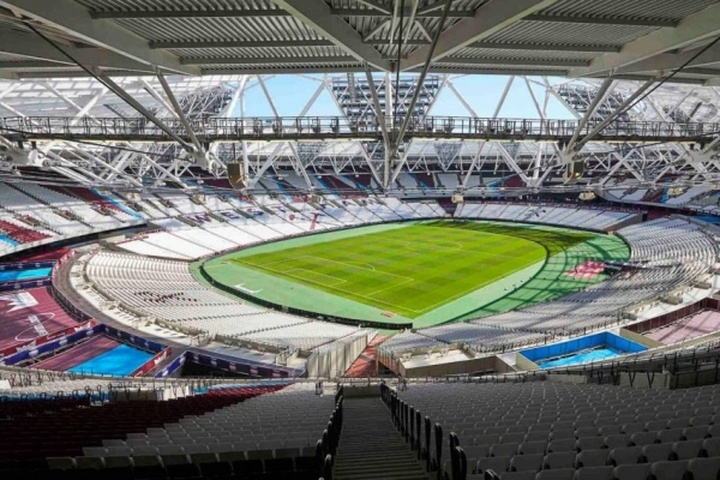
London Stadium. Photo: besoccer.com 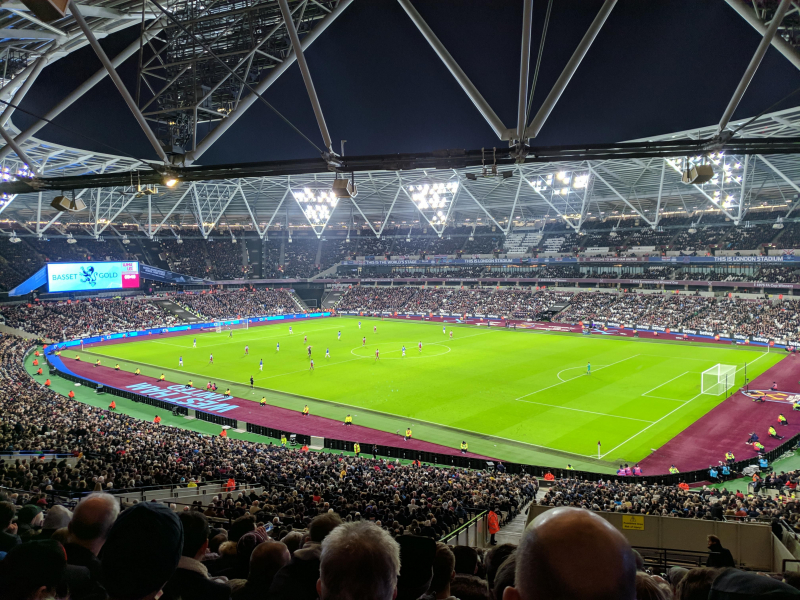
London Stadium. Photo: pinterest.com -
Arsenal's all-singing, all-dancing stadium, Emirates Stadium, was built to replace the club's previous home, Highbury. Only Wembley and Old Trafford in England can accommodate more fans than the Emirates, and all three have the same sterile atmosphere that comes with enormous, overly constructed stadiums. The club has attempted to address this by undergoing a process of "Arsenalization" of the stadium, but it will remain sterile as long as the club prioritizes income over individuality.
The Emirates Stadium was one of the first in the country to abandon the English custom of four separate stands in favor of a more continental "bowl" layout of continuous seating. Emirates Stadium has also hosted, at random, Brazil international friendly games in addition to Arsenal matches. Only two of the games were against "Home Nations" Scotland and the Republic of Ireland.
Capacity: 60,432
Country: England
City: London
Built: 2004 - 2006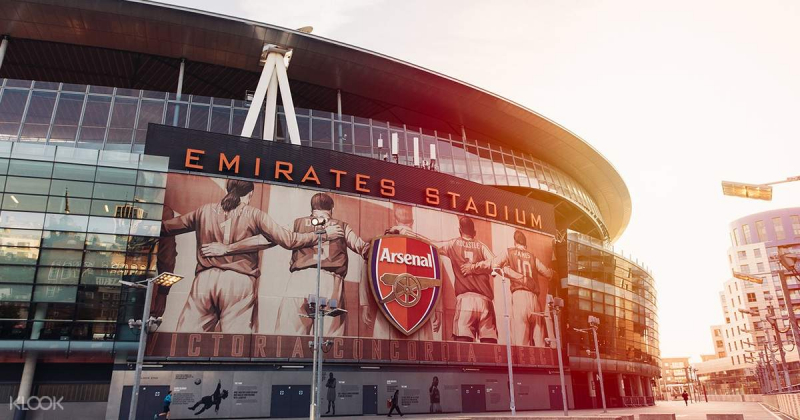
Emirates Stadium. Photo: klook.com 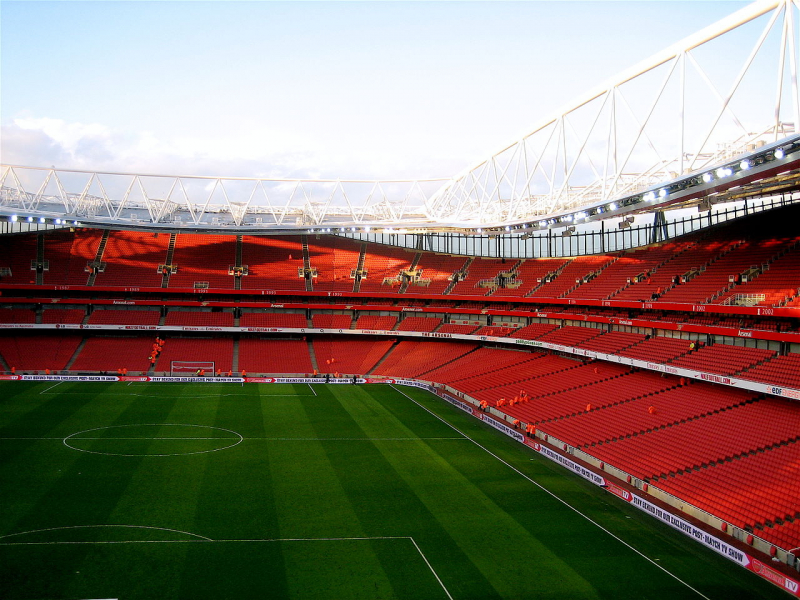
Emirates Stadium. Photo: en.m.wikipedia.org -
Celtic Park first opened its doors in 1892 and did not see any major alterations until the 1990s. The terraces were covered and floodlights were installed, but the ground in 1994 was essentially the same as Celtic Park had been 112 years before.
The Taylor Report's requirement that all stadiums be converted to all-seater events posed problems for Celtic, who could not afford to expand the stadium. It was not until Fergus McCann bought the club that construction on it could begin, with a phased rebuild of the stadium taking place over the next four years and being finished in 1998. In addition to football events, the Celtic Park stadium has also held Scotland international matches, athletics at the 2014 Commonwealth Games, shinty-hurling matches, rugby games, the Cycling World Championships in 1897, and numerous music performances.
Capacity: 60,411
Country: Scotland
City: Glasgow
Built: 1892
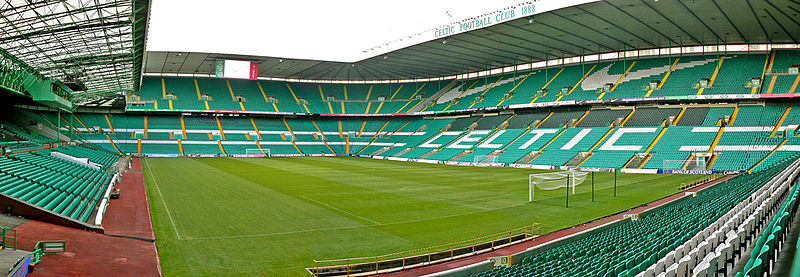
Celtic Park. Photo: en.wikipedia.org 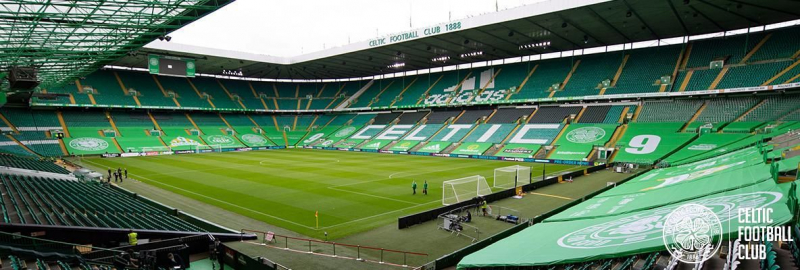
Celtic Park. Photo:celticfc.com -
Manchester had an ambitious goal of hosting the Olympics in 2000. Part of their bid process included designing a stadium that could serve as the major venue for most of the events, similar to the Olympic Stadium. The city's application was ultimately rejected, but the City of Manchester Stadium was built nevertheless. The ground was chosen to host the Commonwealth Games in 2002, despite the fact that it was a small consolation.
Etihad Stadium was then turned into a football stadium, and Manchester City chose to relocate there after leaving Maine Road. Manchester City has called it home since 2003, and it is known as The Etihad Stadium for sponsorship reasons. When it first opened, the stadium had a capacity of 47,726 people, which was enlarged to 55,097 when one of the stands was renovated.
Capacity: 55,097Country: England
City: Manchester
Built: 1999 - 2002
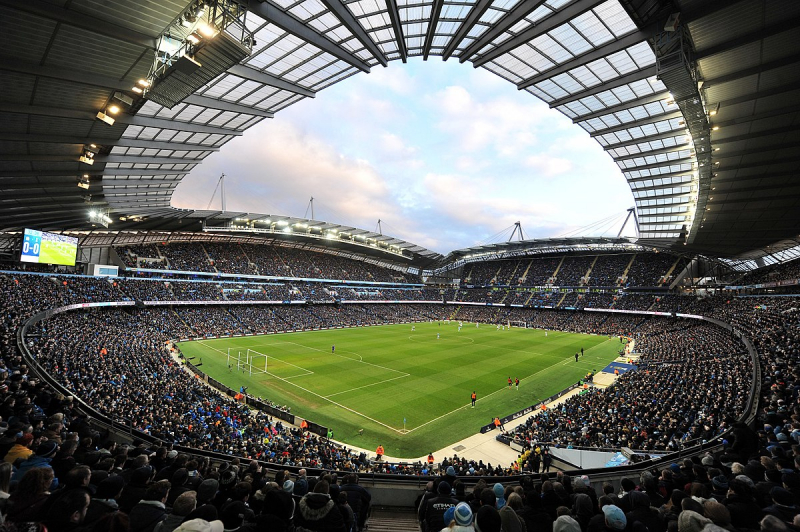
Etihad Stadium. Photo: vi.wikipedia.org 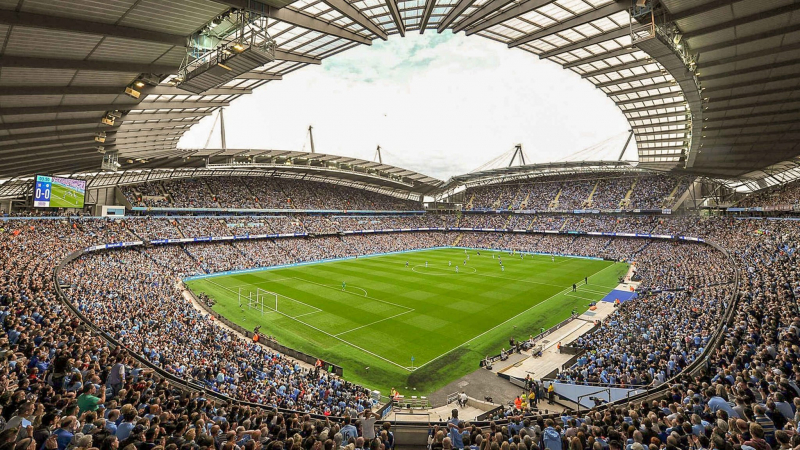
Etihad Stadium. Photo: nabd.ws -
Anfield is one of the most famous football stadiums in the world. Anfield was once the home of Liverpool's city rivals Everton until a rent dispute forced them to leave to their own pitch, leaving the stadium's owner, John Houlding, without a team to play football there. As a result, Liverpool Football Club was established, eventually becoming the most successful British football club of all time.
The stadium underwent the most significant changes following the Hillsborough disaster, in which 96 football fans died as a result of police ineptitude and an unsafe football ground. As a result, the stadium had to become an all-seater stadium, with a capacity of roughly 44,000 people. The main stand was renovated in 2016, increasing the capacity of the stadium by roughly 10,000 seats.Capacity: 54,074
Country: England
City: Liverpool
Built: 1884
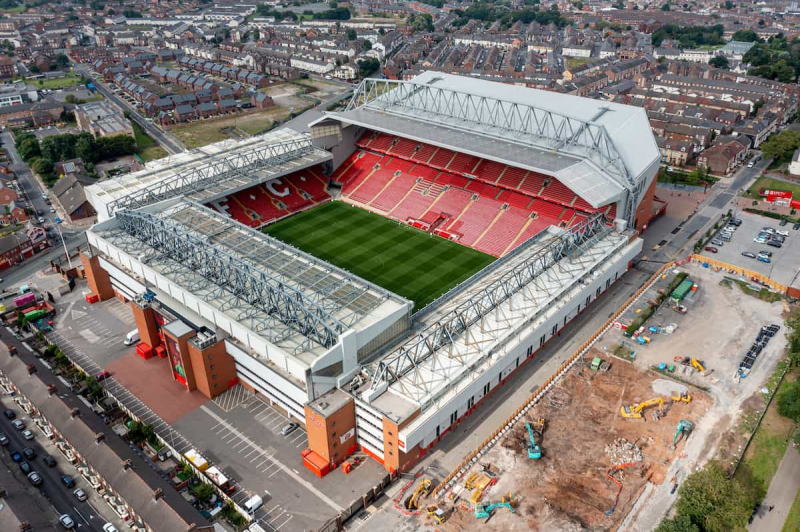
Anfield. Photo: thisisanfield.com 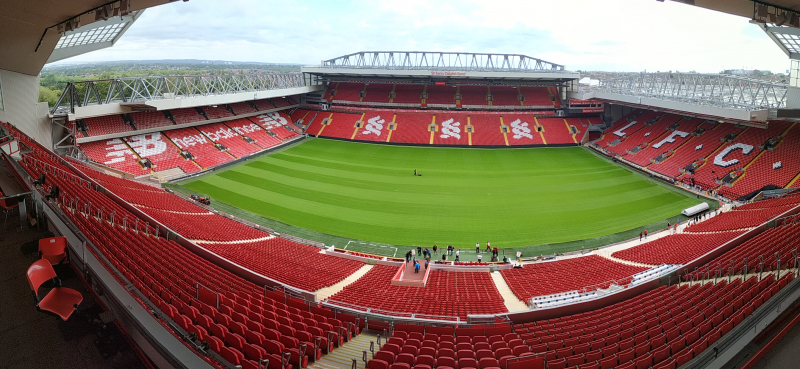
Anfield. Photo: simple.wikipedia.org












